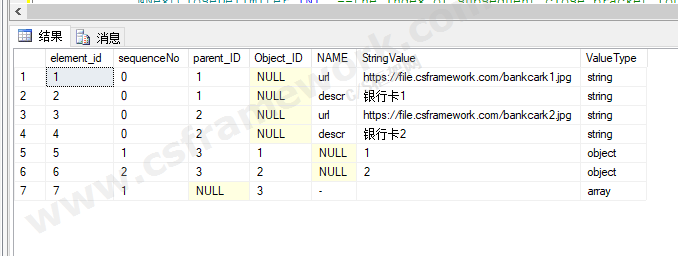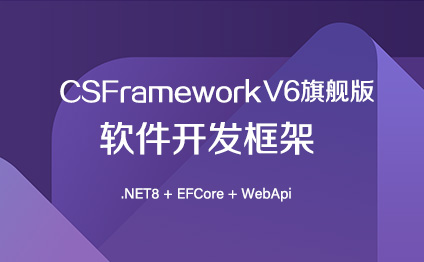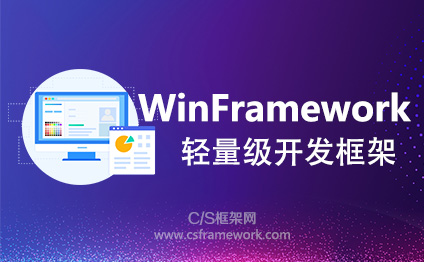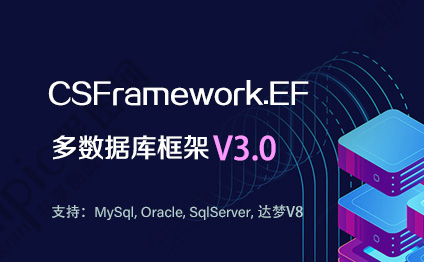SQLServer SQL函数解析JSON数据格式并返回表
 SQLServer SQL函数解析JSON数据格式并返回表
SQLServer SQL函数解析JSON数据格式并返回表SQL Code:
--SQLServer SQL函数解析JSON数据格式并返回表
-- 数据库中 解析JSON
ALTER FUNCTION [dbo].[ufn_ParseJSON]
(
@JSON NVARCHAR(MAX)
)
RETURNS @hierarchy TABLE
(
element_id INT IDENTITY(1, 1) NOT NULL , /* internal surrogate primary key gives the order of parsing and the list order */
sequenceNo [INT] NULL , /* the place in the sequence for the element */
parent_ID INT ,/* if the element has a parent then it is in this column. The document is the ultimate parent, so you can get the structure from recursing from the document */
Object_ID INT ,/* each list or object has an object id. This ties all elements to a parent. Lists are treated as objects here */
NAME NVARCHAR(2000) ,/* the name of the object */
StringValue NVARCHAR(MAX) NOT NULL ,/*the string representation of the value of the element. */
ValueType VARCHAR(10) NOT NULL /* the declared type of the value represented as a string in StringValue*/
)
AS
BEGIN
/******************************************************************************
--测试普通JSON
SELECT * FROM dbo.ufn_ParseJSON('{"url":"https://file.csframework.com/bankcark.jpg","descr":"银行卡"}')
--测试数组JSON
SELECT * FROM dbo.ufn_ParseJSON('[{"url":"https://file.csframework.com/bankcark1.jpg","descr":"银行卡1"},{"url":"https://file.csframework.com/bankcark2.jpg","descr":"银行卡2"}]')
*******************************************************************************/
DECLARE @FirstObject INT , --the index of the first open bracket found in the JSON string
@OpenDelimiter INT ,--the index of the next open bracket found in the JSON string
@NextOpenDelimiter INT ,--the index of subsequent open bracket found in the JSON string
@NextCloseDelimiter INT ,--the index of subsequent close bracket found in the JSON string
@Type NVARCHAR(10) ,--whether it denotes an object or an array
@NextCloseDelimiterChar CHAR(1) ,--either a '}' or a ']'
@Contents NVARCHAR(MAX) , --the unparsed contents of the bracketed expression
@Start INT , --index of the start of the token that you are parsing
@end INT ,--index of the end of the token that you are parsing
@param INT ,--the parameter at the end of the next Object/Array token
@EndOfName INT ,--the index of the start of the parameter at end of Object/Array token
@token NVARCHAR(200) ,--either a string or object
@value NVARCHAR(MAX) , -- the value as a string
@SequenceNo INT , -- the sequence number within a list
@name NVARCHAR(200) , --the name as a string
@parent_ID INT ,--the next parent ID to allocate
@lenJSON INT ,--the current length of the JSON String
@characters NCHAR(36) ,--used to convert hex to decimal
@result BIGINT ,--the value of the hex symbol being parsed
@index SMALLINT ,--used for parsing the hex value
@Escape INT; --the index of the next escape character
DECLARE @Strings TABLE /* in this temporary table we keep all strings, even the names of the elements, since they are 'escaped' in a different way, and may contain, unescaped, brackets denoting objects or lists. These are replaced in the JSON string by tokens representing the string */
(
String_ID INT IDENTITY(1, 1) ,
StringValue NVARCHAR(MAX)
);
SELECT--initialise the characters to convert hex to ascii
@characters = '0123456789abcdefghijklmnopqrstuvwxyz' ,
@SequenceNo = 0 , --set the sequence no. to something sensible.
/* firstly we process all strings. This is done because [{} and ] aren't escaped in strings, which complicates an iterative parse. */
@parent_ID = 0;
WHILE 1 = 1 --forever until there is nothing more to do
BEGIN
SELECT @Start = PATINDEX('%[^a-zA-Z]["]%',
@JSON COLLATE SQL_Latin1_General_CP850_BIN);--next delimited string
IF @Start = 0
BREAK; --no more so drop through the WHILE loop
IF SUBSTRING(@JSON, @Start + 1, 1) = '"'
BEGIN --Delimited Name
SET @Start = @Start + 1;
SET @end = PATINDEX('%[^\]["]%',
RIGHT(@JSON,
LEN(@JSON + '|') - @Start));
END;
IF @end = 0 --no end delimiter to last string
BREAK; --no more
SELECT @token = SUBSTRING(@JSON, @Start + 1, @end - 1);
--now put in the escaped control characters
SELECT @token = REPLACE(@token, FromString, ToString)
FROM ( SELECT '\"' AS FromString ,
'"' AS ToString
UNION ALL
SELECT '\\' ,
'\'
UNION ALL
SELECT '\/' ,
'/'
UNION ALL
SELECT '\b' ,
CHAR(08)
UNION ALL
SELECT '\f' ,
CHAR(12)
UNION ALL
SELECT '\n' ,
CHAR(10)
UNION ALL
SELECT '\r' ,
CHAR(13)
UNION ALL
SELECT '\t' ,
CHAR(09)
) substitutions;
SELECT @result = 0 ,
@Escape = 1;
--Begin to take out any hex escape codes
WHILE @Escape > 0
BEGIN
SELECT @index = 0 ,
--find the next hex escape sequence
@Escape = PATINDEX('%\x[0-9a-f][0-9a-f][0-9a-f][0-9a-f]%',
@token);
IF @Escape > 0 --if there is one
BEGIN
WHILE @index < 4 --there are always four digits to a \x sequence
BEGIN
SELECT --determine its value
@result = @result + POWER(16,
@index)
* ( CHARINDEX(SUBSTRING(@token,
@Escape + 2 + 3
- @index, 1),
@characters) - 1 ) ,
@index = @index + 1;
END;
-- and replace the hex sequence by its unicode value
SELECT @token = STUFF(@token, @Escape, 6,
NCHAR(@result));
END;
END;
--now store the string away
INSERT INTO @Strings
( StringValue )
SELECT @token;
-- and replace the string with a token
SELECT @JSON = STUFF(@JSON, @Start, @end + 1,
'@string'
+ CONVERT(NVARCHAR(5), @@identity));
END;
-- all strings are now removed. Now we find the first leaf.
WHILE 1 = 1 --forever until there is nothing more to do
BEGIN
SELECT @parent_ID = @parent_ID + 1;
--find the first object or list by looking for the open bracket
SELECT @FirstObject = PATINDEX('%[{[[]%',
@JSON COLLATE SQL_Latin1_General_CP850_BIN);--object or array
IF @FirstObject = 0
BREAK;
IF ( SUBSTRING(@JSON, @FirstObject, 1) = '{' )
SELECT @NextCloseDelimiterChar = '}' ,
@Type = 'object';
ELSE
SELECT @NextCloseDelimiterChar = ']' ,
@Type = 'array';
SELECT @OpenDelimiter = @FirstObject;
WHILE 1 = 1 --find the innermost object or list...
BEGIN
SELECT @lenJSON = LEN(@JSON + '|') - 1;
--find the matching close-delimiter proceeding after the open-delimiter
SELECT @NextCloseDelimiter = CHARINDEX(@NextCloseDelimiterChar,
@JSON,
@OpenDelimiter
+ 1);
--is there an intervening open-delimiter of either type
SELECT @NextOpenDelimiter = PATINDEX('%[{[[]%',
RIGHT(@JSON,
@lenJSON
- @OpenDelimiter)COLLATE SQL_Latin1_General_CP850_BIN);--object
IF @NextOpenDelimiter = 0
BREAK;
SELECT @NextOpenDelimiter = @NextOpenDelimiter
+ @OpenDelimiter;
IF @NextCloseDelimiter < @NextOpenDelimiter
BREAK;
IF SUBSTRING(@JSON, @NextOpenDelimiter, 1) = '{'
SELECT @NextCloseDelimiterChar = '}' ,
@Type = 'object';
ELSE
SELECT @NextCloseDelimiterChar = ']' ,
@Type = 'array';
SELECT @OpenDelimiter = @NextOpenDelimiter;
END;
---and parse out the list or name/value pairs
SELECT @Contents = SUBSTRING(@JSON, @OpenDelimiter + 1,
@NextCloseDelimiter
- @OpenDelimiter - 1);
SELECT @JSON = STUFF(@JSON, @OpenDelimiter,
@NextCloseDelimiter - @OpenDelimiter + 1,
'@' + @Type
+ CONVERT(NVARCHAR(5), @parent_ID));
WHILE ( PATINDEX('%[A-Za-z0-9@+.e]%',
@Contents COLLATE SQL_Latin1_General_CP850_BIN) ) <> 0
BEGIN
IF @Type = 'Object' --it will be a 0-n list containing a string followed by a string, number,boolean, or null
BEGIN
SELECT @SequenceNo = 0 ,
@end = CHARINDEX(':', ' ' + @Contents);--if there is anything, it will be a string-based name.
SELECT @Start = PATINDEX('%[^A-Za-z@][@]%',
' ' + @Contents);--AAAAAAAA
SELECT @token = SUBSTRING(' ' + @Contents,
@Start + 1,
@end - @Start - 1) ,
@EndOfName = PATINDEX('%[0-9]%',
@token COLLATE SQL_Latin1_General_CP850_BIN) ,
@param = RIGHT(@token,
LEN(@token)
- @EndOfName + 1);
SELECT @token = LEFT(@token, @EndOfName - 1) ,
@Contents = RIGHT(' ' + @Contents,
LEN(' ' + @Contents
+ '|') - @end
- 1);
SELECT @name = StringValue
FROM @Strings
WHERE String_ID = @param; --fetch the name
END;
ELSE
SELECT @name = NULL ,
@SequenceNo = @SequenceNo + 1;
SELECT @end = CHARINDEX(',', @Contents);-- a string-token, object-token, list-token, number,boolean, or null
IF @end = 0
SELECT @end = PATINDEX('%[A-Za-z0-9@+.e][^A-Za-z0-9@+.e]%',
@Contents + ' ') + 1;
SELECT @Start = PATINDEX('%[^A-Za-z0-9@+.e][A-Za-z0-9@+.e]%',
' ' + @Contents);
--select @start,@end, LEN(@contents+'|'), @contents
SELECT @value = RTRIM(SUBSTRING(@Contents, @Start,
@end - @Start)) ,
@Contents = RIGHT(@Contents + ' ',
LEN(@Contents + '|') - @end);
IF SUBSTRING(@value, 1, 7) = '@object'
INSERT INTO @hierarchy
( NAME ,
sequenceNo ,
parent_ID ,
StringValue ,
Object_ID ,
ValueType
)
SELECT @name ,
@SequenceNo ,
@parent_ID ,
SUBSTRING(@value, 8, 5) ,
SUBSTRING(@value, 8, 5) ,
'object';
ELSE
IF SUBSTRING(@value, 1, 6) = '@array'
INSERT INTO @hierarchy
( NAME ,
sequenceNo ,
parent_ID ,
StringValue ,
Object_ID ,
ValueType
)
SELECT @name ,
@SequenceNo ,
@parent_ID ,
SUBSTRING(@value, 7, 5) ,
SUBSTRING(@value, 7, 5) ,
'array';
ELSE
IF SUBSTRING(@value, 1, 7) = '@string'
INSERT INTO @hierarchy
( NAME ,
sequenceNo ,
parent_ID ,
StringValue ,
ValueType
)
SELECT @name ,
@SequenceNo ,
@parent_ID ,
StringValue ,
'string'
FROM @Strings
WHERE String_ID = SUBSTRING(@value,
8, 5);
ELSE
IF @value IN ( 'true', 'false' )
INSERT INTO @hierarchy
( NAME ,
sequenceNo ,
parent_ID ,
StringValue ,
ValueType
)
SELECT @name ,
@SequenceNo ,
@parent_ID ,
@value ,
'boolean';
ELSE
IF @value = 'null'
INSERT INTO @hierarchy
( NAME ,
sequenceNo ,
parent_ID ,
StringValue ,
ValueType
)
SELECT @name ,
@SequenceNo ,
@parent_ID ,
@value ,
'null';
ELSE
IF PATINDEX('%[^0-9]%',
@value COLLATE SQL_Latin1_General_CP850_BIN) > 0
INSERT INTO @hierarchy
( NAME ,
sequenceNo ,
parent_ID ,
StringValue ,
ValueType
)
SELECT
@name ,
@SequenceNo ,
@parent_ID ,
@value ,
'real';
ELSE
INSERT INTO @hierarchy
( NAME ,
sequenceNo ,
parent_ID ,
StringValue ,
ValueType
)
SELECT
@name ,
@SequenceNo ,
@parent_ID ,
@value ,
'int';
IF @Contents = ' '
SELECT @SequenceNo = 0;
END;
END;
INSERT INTO @hierarchy
( NAME ,
sequenceNo ,
parent_ID ,
StringValue ,
Object_ID ,
ValueType
)
SELECT '-' ,
1 ,
NULL ,
'' ,
@parent_ID - 1 ,
@Type;
--
RETURN;
END;
//来源:C/S框架网(www.csframework.com) QQ:23404761
--SQLServer SQL函数解析JSON数据格式并返回表
-- 数据库中 解析JSON
ALTER FUNCTION [dbo].[ufn_ParseJSON]
(
@JSON NVARCHAR(MAX)
)
RETURNS @hierarchy TABLE
(
element_id INT IDENTITY(1, 1) NOT NULL , /* internal surrogate primary key gives the order of parsing and the list order */
sequenceNo [INT] NULL , /* the place in the sequence for the element */
parent_ID INT ,/* if the element has a parent then it is in this column. The document is the ultimate parent, so you can get the structure from recursing from the document */
Object_ID INT ,/* each list or object has an object id. This ties all elements to a parent. Lists are treated as objects here */
NAME NVARCHAR(2000) ,/* the name of the object */
StringValue NVARCHAR(MAX) NOT NULL ,/*the string representation of the value of the element. */
ValueType VARCHAR(10) NOT NULL /* the declared type of the value represented as a string in StringValue*/
)
AS
BEGIN
/******************************************************************************
--测试普通JSON
SELECT * FROM dbo.ufn_ParseJSON('{"url":"https://file.csframework.com/bankcark.jpg","descr":"银行卡"}')
--测试数组JSON
SELECT * FROM dbo.ufn_ParseJSON('[{"url":"https://file.csframework.com/bankcark1.jpg","descr":"银行卡1"},{"url":"https://file.csframework.com/bankcark2.jpg","descr":"银行卡2"}]')
*******************************************************************************/
DECLARE @FirstObject INT , --the index of the first open bracket found in the JSON string
@OpenDelimiter INT ,--the index of the next open bracket found in the JSON string
@NextOpenDelimiter INT ,--the index of subsequent open bracket found in the JSON string
@NextCloseDelimiter INT ,--the index of subsequent close bracket found in the JSON string
@Type NVARCHAR(10) ,--whether it denotes an object or an array
@NextCloseDelimiterChar CHAR(1) ,--either a '}' or a ']'
@Contents NVARCHAR(MAX) , --the unparsed contents of the bracketed expression
@Start INT , --index of the start of the token that you are parsing
@end INT ,--index of the end of the token that you are parsing
@param INT ,--the parameter at the end of the next Object/Array token
@EndOfName INT ,--the index of the start of the parameter at end of Object/Array token
@token NVARCHAR(200) ,--either a string or object
@value NVARCHAR(MAX) , -- the value as a string
@SequenceNo INT , -- the sequence number within a list
@name NVARCHAR(200) , --the name as a string
@parent_ID INT ,--the next parent ID to allocate
@lenJSON INT ,--the current length of the JSON String
@characters NCHAR(36) ,--used to convert hex to decimal
@result BIGINT ,--the value of the hex symbol being parsed
@index SMALLINT ,--used for parsing the hex value
@Escape INT; --the index of the next escape character
DECLARE @Strings TABLE /* in this temporary table we keep all strings, even the names of the elements, since they are 'escaped' in a different way, and may contain, unescaped, brackets denoting objects or lists. These are replaced in the JSON string by tokens representing the string */
(
String_ID INT IDENTITY(1, 1) ,
StringValue NVARCHAR(MAX)
);
SELECT--initialise the characters to convert hex to ascii
@characters = '0123456789abcdefghijklmnopqrstuvwxyz' ,
@SequenceNo = 0 , --set the sequence no. to something sensible.
/* firstly we process all strings. This is done because [{} and ] aren't escaped in strings, which complicates an iterative parse. */
@parent_ID = 0;
WHILE 1 = 1 --forever until there is nothing more to do
BEGIN
SELECT @Start = PATINDEX('%[^a-zA-Z]["]%',
@JSON COLLATE SQL_Latin1_General_CP850_BIN);--next delimited string
IF @Start = 0
BREAK; --no more so drop through the WHILE loop
IF SUBSTRING(@JSON, @Start + 1, 1) = '"'
BEGIN --Delimited Name
SET @Start = @Start + 1;
SET @end = PATINDEX('%[^\]["]%',
RIGHT(@JSON,
LEN(@JSON + '|') - @Start));
END;
IF @end = 0 --no end delimiter to last string
BREAK; --no more
SELECT @token = SUBSTRING(@JSON, @Start + 1, @end - 1);
--now put in the escaped control characters
SELECT @token = REPLACE(@token, FromString, ToString)
FROM ( SELECT '\"' AS FromString ,
'"' AS ToString
UNION ALL
SELECT '\\' ,
'\'
UNION ALL
SELECT '\/' ,
'/'
UNION ALL
SELECT '\b' ,
CHAR(08)
UNION ALL
SELECT '\f' ,
CHAR(12)
UNION ALL
SELECT '\n' ,
CHAR(10)
UNION ALL
SELECT '\r' ,
CHAR(13)
UNION ALL
SELECT '\t' ,
CHAR(09)
) substitutions;
SELECT @result = 0 ,
@Escape = 1;
--Begin to take out any hex escape codes
WHILE @Escape > 0
BEGIN
SELECT @index = 0 ,
--find the next hex escape sequence
@Escape = PATINDEX('%\x[0-9a-f][0-9a-f][0-9a-f][0-9a-f]%',
@token);
IF @Escape > 0 --if there is one
BEGIN
WHILE @index < 4 --there are always four digits to a \x sequence
BEGIN
SELECT --determine its value
@result = @result + POWER(16,
@index)
* ( CHARINDEX(SUBSTRING(@token,
@Escape + 2 + 3
- @index, 1),
@characters) - 1 ) ,
@index = @index + 1;
END;
-- and replace the hex sequence by its unicode value
SELECT @token = STUFF(@token, @Escape, 6,
NCHAR(@result));
END;
END;
--now store the string away
INSERT INTO @Strings
( StringValue )
SELECT @token;
-- and replace the string with a token
SELECT @JSON = STUFF(@JSON, @Start, @end + 1,
'@string'
+ CONVERT(NVARCHAR(5), @@identity));
END;
-- all strings are now removed. Now we find the first leaf.
WHILE 1 = 1 --forever until there is nothing more to do
BEGIN
SELECT @parent_ID = @parent_ID + 1;
--find the first object or list by looking for the open bracket
SELECT @FirstObject = PATINDEX('%[{[[]%',
@JSON COLLATE SQL_Latin1_General_CP850_BIN);--object or array
IF @FirstObject = 0
BREAK;
IF ( SUBSTRING(@JSON, @FirstObject, 1) = '{' )
SELECT @NextCloseDelimiterChar = '}' ,
@Type = 'object';
ELSE
SELECT @NextCloseDelimiterChar = ']' ,
@Type = 'array';
SELECT @OpenDelimiter = @FirstObject;
WHILE 1 = 1 --find the innermost object or list...
BEGIN
SELECT @lenJSON = LEN(@JSON + '|') - 1;
--find the matching close-delimiter proceeding after the open-delimiter
SELECT @NextCloseDelimiter = CHARINDEX(@NextCloseDelimiterChar,
@JSON,
@OpenDelimiter
+ 1);
--is there an intervening open-delimiter of either type
SELECT @NextOpenDelimiter = PATINDEX('%[{[[]%',
RIGHT(@JSON,
@lenJSON
- @OpenDelimiter)COLLATE SQL_Latin1_General_CP850_BIN);--object
IF @NextOpenDelimiter = 0
BREAK;
SELECT @NextOpenDelimiter = @NextOpenDelimiter
+ @OpenDelimiter;
IF @NextCloseDelimiter < @NextOpenDelimiter
BREAK;
IF SUBSTRING(@JSON, @NextOpenDelimiter, 1) = '{'
SELECT @NextCloseDelimiterChar = '}' ,
@Type = 'object';
ELSE
SELECT @NextCloseDelimiterChar = ']' ,
@Type = 'array';
SELECT @OpenDelimiter = @NextOpenDelimiter;
END;
---and parse out the list or name/value pairs
SELECT @Contents = SUBSTRING(@JSON, @OpenDelimiter + 1,
@NextCloseDelimiter
- @OpenDelimiter - 1);
SELECT @JSON = STUFF(@JSON, @OpenDelimiter,
@NextCloseDelimiter - @OpenDelimiter + 1,
'@' + @Type
+ CONVERT(NVARCHAR(5), @parent_ID));
WHILE ( PATINDEX('%[A-Za-z0-9@+.e]%',
@Contents COLLATE SQL_Latin1_General_CP850_BIN) ) <> 0
BEGIN
IF @Type = 'Object' --it will be a 0-n list containing a string followed by a string, number,boolean, or null
BEGIN
SELECT @SequenceNo = 0 ,
@end = CHARINDEX(':', ' ' + @Contents);--if there is anything, it will be a string-based name.
SELECT @Start = PATINDEX('%[^A-Za-z@][@]%',
' ' + @Contents);--AAAAAAAA
SELECT @token = SUBSTRING(' ' + @Contents,
@Start + 1,
@end - @Start - 1) ,
@EndOfName = PATINDEX('%[0-9]%',
@token COLLATE SQL_Latin1_General_CP850_BIN) ,
@param = RIGHT(@token,
LEN(@token)
- @EndOfName + 1);
SELECT @token = LEFT(@token, @EndOfName - 1) ,
@Contents = RIGHT(' ' + @Contents,
LEN(' ' + @Contents
+ '|') - @end
- 1);
SELECT @name = StringValue
FROM @Strings
WHERE String_ID = @param; --fetch the name
END;
ELSE
SELECT @name = NULL ,
@SequenceNo = @SequenceNo + 1;
SELECT @end = CHARINDEX(',', @Contents);-- a string-token, object-token, list-token, number,boolean, or null
IF @end = 0
SELECT @end = PATINDEX('%[A-Za-z0-9@+.e][^A-Za-z0-9@+.e]%',
@Contents + ' ') + 1;
SELECT @Start = PATINDEX('%[^A-Za-z0-9@+.e][A-Za-z0-9@+.e]%',
' ' + @Contents);
--select @start,@end, LEN(@contents+'|'), @contents
SELECT @value = RTRIM(SUBSTRING(@Contents, @Start,
@end - @Start)) ,
@Contents = RIGHT(@Contents + ' ',
LEN(@Contents + '|') - @end);
IF SUBSTRING(@value, 1, 7) = '@object'
INSERT INTO @hierarchy
( NAME ,
sequenceNo ,
parent_ID ,
StringValue ,
Object_ID ,
ValueType
)
SELECT @name ,
@SequenceNo ,
@parent_ID ,
SUBSTRING(@value, 8, 5) ,
SUBSTRING(@value, 8, 5) ,
'object';
ELSE
IF SUBSTRING(@value, 1, 6) = '@array'
INSERT INTO @hierarchy
( NAME ,
sequenceNo ,
parent_ID ,
StringValue ,
Object_ID ,
ValueType
)
SELECT @name ,
@SequenceNo ,
@parent_ID ,
SUBSTRING(@value, 7, 5) ,
SUBSTRING(@value, 7, 5) ,
'array';
ELSE
IF SUBSTRING(@value, 1, 7) = '@string'
INSERT INTO @hierarchy
( NAME ,
sequenceNo ,
parent_ID ,
StringValue ,
ValueType
)
SELECT @name ,
@SequenceNo ,
@parent_ID ,
StringValue ,
'string'
FROM @Strings
WHERE String_ID = SUBSTRING(@value,
8, 5);
ELSE
IF @value IN ( 'true', 'false' )
INSERT INTO @hierarchy
( NAME ,
sequenceNo ,
parent_ID ,
StringValue ,
ValueType
)
SELECT @name ,
@SequenceNo ,
@parent_ID ,
@value ,
'boolean';
ELSE
IF @value = 'null'
INSERT INTO @hierarchy
( NAME ,
sequenceNo ,
parent_ID ,
StringValue ,
ValueType
)
SELECT @name ,
@SequenceNo ,
@parent_ID ,
@value ,
'null';
ELSE
IF PATINDEX('%[^0-9]%',
@value COLLATE SQL_Latin1_General_CP850_BIN) > 0
INSERT INTO @hierarchy
( NAME ,
sequenceNo ,
parent_ID ,
StringValue ,
ValueType
)
SELECT
@name ,
@SequenceNo ,
@parent_ID ,
@value ,
'real';
ELSE
INSERT INTO @hierarchy
( NAME ,
sequenceNo ,
parent_ID ,
StringValue ,
ValueType
)
SELECT
@name ,
@SequenceNo ,
@parent_ID ,
@value ,
'int';
IF @Contents = ' '
SELECT @SequenceNo = 0;
END;
END;
INSERT INTO @hierarchy
( NAME ,
sequenceNo ,
parent_ID ,
StringValue ,
Object_ID ,
ValueType
)
SELECT '-' ,
1 ,
NULL ,
'' ,
@parent_ID - 1 ,
@Type;
--
RETURN;
END;
//来源:C/S框架网(www.csframework.com) QQ:23404761
测试SQL函数:
SQL Code:
--测试普通JSON
SELECT * FROM dbo.ufn_ParseJSON('{"url":"https://file.csframework.com/bankcark.jpg","descr":"银行卡"}')
--测试数组JSON
SELECT * FROM dbo.ufn_ParseJSON('[{"url":"https://file.csframework.com/bankcark1.jpg","descr":"银行卡1"},{"url":"https://file.csframework.com/bankcark2.jpg","descr":"银行卡2"}]')
//来源:C/S框架网(www.csframework.com) QQ:23404761
SELECT * FROM dbo.ufn_ParseJSON('{"url":"https://file.csframework.com/bankcark.jpg","descr":"银行卡"}')
--测试数组JSON
SELECT * FROM dbo.ufn_ParseJSON('[{"url":"https://file.csframework.com/bankcark1.jpg","descr":"银行卡1"},{"url":"https://file.csframework.com/bankcark2.jpg","descr":"银行卡2"}]')
//来源:C/S框架网(www.csframework.com) QQ:23404761
返回结果:


版权声明:本文为开发框架文库发布内容,转载请附上原文出处连接
NewDoc C/S框架网







